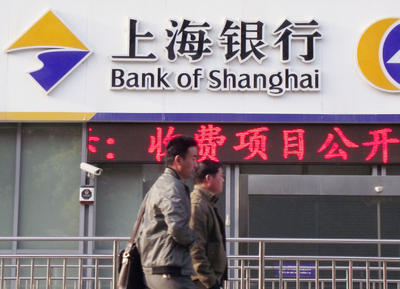How should the world deal with Chinese reforms?
This Post has Comments Off on How should the world deal with Chinese reforms?
The liturgy in the West is that so long as China becomes a responsible stakeholder in the international economic system — conforming to the western created rules and norms — its accommodation into the global economy is guaranteed. The same liturgy used to be cited when Japan was on the make.

Two weeks ago Yiping Huang revealed here that an increasing number of policy advisors in Beijing are now urging the government to apply to join the Trans-Pacific Partnership (TPP) negotiations as early as possible. In particular, they argue that many of the TPP’s sticky issues — such as reform of state-owned enterprises (SOEs), environmental and labour standards, protection of intellectual property rights and liberalisation of services trade — are also on China’s own reform agenda. The TPP has often been seen in the past, both inside China and outside, as a way of excluding China from deeper economic engagement across the Pacific with the United States and its partners, both because of its focus on enterprise reform and the way in which the negotiations were set up to make it difficult for new members like China to enter. Certainly there was no early welcome mat laid out to Chinese entry.
Since Huang’s piece, USTR Michael Froman confirmed on 23 January that, while the United States was open to other countries joining the TPP, China could not be an early starter. Rather the focus should first be on the negotiation of a bilateral investment treaty between the US and China. ‘We’ll want to see whether we can make progress there first’, Froman said during the World Economic Forum in Davos. Before China can be considered for the TPP, Washington wants movement on a bilateral investment treaty. ‘That’s where I think our focus should be because those are key elements of any investment chapter (in the TPP)’.
The bottom line in this strategy is to keep Chinese SOEs — as well as a number of non-state-owned enterprises like telecom giant Huawei — in the international economic sin bin: under different rules and terms of access to international markets, no matter what their compliance with the existing international rules and no matter what the Chinese commitment is to reform of SOEs under the goals laid out by the Third Plenum.
That’s one way of satisfying those who fear the potential of China’s rising economic might. Try to lock it out and cut yourself off from the difficulties of engaging with a transition that is going to take a decade or more to take effect. Don’t calculate the benefits of engagement along the way nor how they stack up against the difficulties that have to be managed.
In another timely contribution on the subject this week, Yiping Huang explains the core of China’s new reform agenda and the goal of completing the transition to a market economy that began 35 years ago.
‘The most important statement of the entire (Third Plenum) policy document’, Huang says, ‘is … (that) wherever market mechanisms work in allocating resources, the government should not intervene. The government will continue to play an active role, but only to provide public goods and overcome market failure’. The privileged position of monopoly SOEs is coming to an end. While investments in these enterprises probably paid off handsomely in the past, this will change as China moves toward a full market system.
China’s growth model is already changing, with deceleration of the pace of growth and rebalancing of the economy. Rising wages, associated with emerging labour shortages, cut into profit margins, investment returns and export competitiveness but increase household income. With the slowing pace of activity, external account surpluses are declining. Higher wages improve income distribution as low-income households rely on wages and high-income households rely more on investment returns. Consumption share of GDP will rise as household income grows faster than national income. But this is only the beginning, says Huang. Completion of this transition depends critically on implementation of the reforms announced at the Third Plenum, especially financial liberalisation.
For international investors, Huang points out, after weighing the risks, the investment opportunity is too big to miss.
There is also growing opportunity to benefit from Chinese investment abroad. ‘China is already the third-largest FDI investor. And China’s net capital outflows could be equivalent to 4–8 per cent of GDP if China liberalises its capital account, according to one recent IMF study’. Chinese direct investment overseas will expand from resources to manufacturing and infrastructure.
China is also rapidly becoming a centre of innovative opportunity. It already ranks at the top of the world, alongside the US and Japan, in terms on the number of patents and the ratio of patents to R&D expenditure. Zhongxing and Huawei are among the world’s top three companies for patent numbers. The internet is revolutionising finance, commerce and publishing. Today, e-commerce accounts for 6 per cent of total retail sales.
Huang’s main message is that countries that do not welcome Chinese money and economic engagement risk seeing it go elsewhere. That will see the development of a bifurcated world economy, one part linked into China’s growth and change; one part excluding itself from it.
Huang concludes that even if only a portion of the proposed Third Plenum measures are fully implemented, by around 2020 China should be a high-income market country, the world’s number-one economy (and the United States number two asKishore Mahbubani reminds us again this week) as well as its most vibrant consumer market.
Are the established industrial powers able to digest such change, under rules that welcome it?